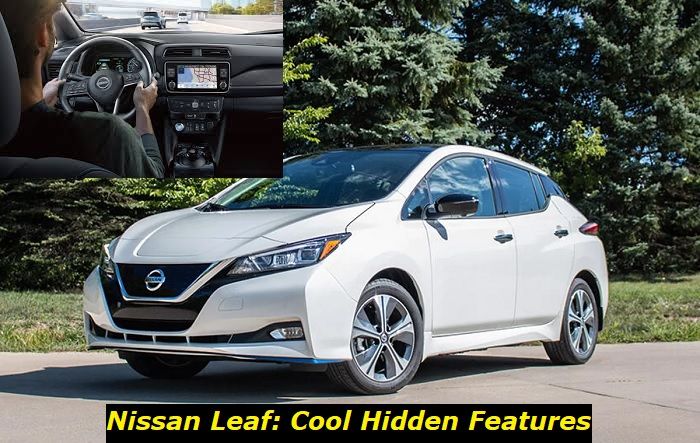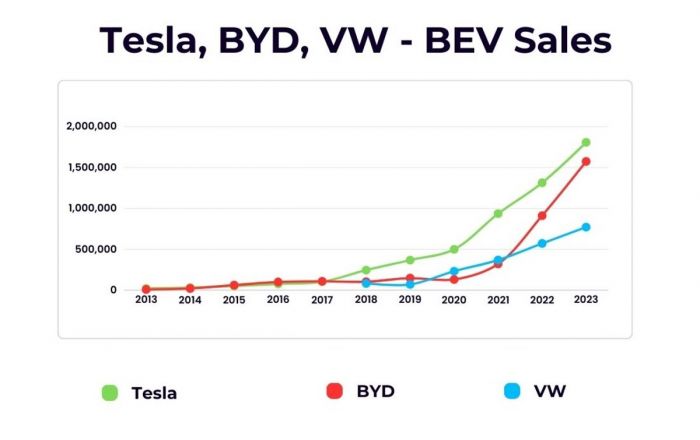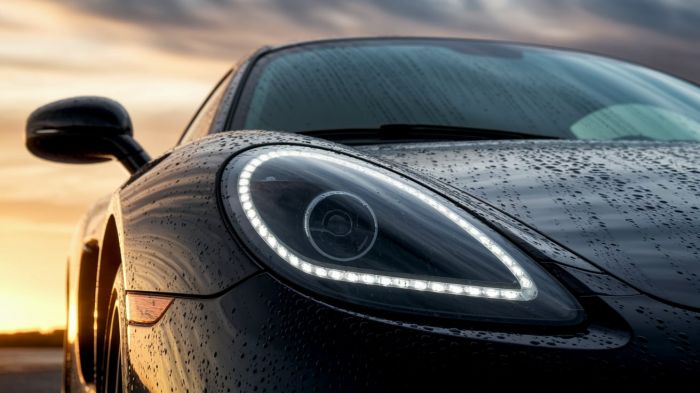When you are thinking about a new car, you aren't likely to consider Mitsubishi. These cars lost their market in major countries and are now struggling to get their fame back. But we should agree that the new Outlander doesn't look bad and offers quite a lot of advantages to buyers. Of course, some flaws should also be considered.
Today, we'll tell you about the Mitsubishi Outlander 2.5L gasoline engine. We'll cover its specs and will look thoroughly at its problems. You will be surprised to know that a totally different SUV which is quite popular in the US shares the engine with the new Outlander. Also, you should know more about the durability of this engine before you make any decisions.
.jpg)
Key features and my opinion about the engine
- Production years:2018-now
- Average lifespan of PR25DD:190,000-220,000 miles
- Fuel supply type: direct injection
- Power range: 184-188 hp
- Fuel efficiency: good
- Engine block material: aluminum
- Engine reliability score: medium
- The most common problems: start-stop glitching, carbon buildup on intake valves, EGR valve contamination, no hydraulic lifters.
What should you know about the new Outlander 2.5L engine?
We all know that Mitsubishi doesn't live the best years of its history now. Its SUVs nearly lost the market in Europe and Australia. The US buyers also started looking for other options. Only China keeps buying Mitsubishi cars but we should say that the competition there is insane.
But the new Outlander generation should change something unless it's not only changed visually. The heart of the new Outlander is the decent 2.5L engine. And when you look at its main specs, it seems really good to you.
Before we start talking about this engine, you should know that it's the same 2.5L engine that is installed in the Nissan Rogue (Nissan PR25DD). Surprising, isn't it? Also, the new Outlander shares a lot of interior and exterior parts (at least, their design) with the new Rogue.
But let's talk more about the engine:
- this is the naturally aspirated Nissan engine that offers 2.5 liters of displacement and 181 horsepower, it has 181 lb-ft of torque;
- this is the simple inline 4-cylinder engine with nothing super technological in it which makes it cool for durable work;
- the engine has direct injection which is good for fuel economy but a little bad for maintenance, the injection system is pretty well though-out;
- the first PR25DD engine was produced in 2018, so still we don't have a lot of stats to rely on when talking about its advantages or drawbacks;
- the timing system is driven by chain, so you'll have to pay attention to any noises and replace the chain at 80-100 thousand miles;
- the engine is equipped with all kinds of technologies to make it more economical, so it can go about 31 mpg on highways and 24 mpg in the city;
- the engine is not equipped with hydraulic lifters and it makes this unit look like a dinosaur in terms of valve adjustment.
Well, there is a lot we can say about the 2.5L engine in the Outlander, but we believe you are not really interested in highly technical things. We can tell you that the engine is really not bad. It's good to drive, it's quite powerful, and offers a lot of torque at low RPM. But we still believe it has less horsepower than needed for the new Outlander.
This is now the only engine available for buyers of the Mitsubishi Outlander but soon the hybrid version should be available, too. In our point of view, the 2.5L Nissan engine is not a bad option for the Outlander as the base engine. But we would add another V6 option for those who are ready to pay more but want to drive better. At least, this version would sell better in the US right now.
How long will the 2.5L Outlander engine live?
Well, the first engine of this type was made in 2018, so we still can't tell you for sure how many miles it will go before it has to be repaired. But what we perfectly know is that the previous 2.5L Nissan engine with the same construction was pretty durable. We believe the PR25DD engine can easily hit the 200,000-mile mark.
Of course, the longevity of any engine including the Outlander powerplant depends much on how you use your vehicle. If you drive aggressively and then forget to take the car in for regular maintenance, the vehicle will break down pretty quickly and will need a lot of money to get back on the road.
Though, we shouldn't talk about the longevity of the engine without assessing other parts of the car. And here we are going to have some surprises from Mitsubishi and Nissan. The longevity of the engine doesn't mean that your Outlander will easily go over 200,000 miles with no problems.
What are the common issues of the 2.5L Mitsubishi Outlander engine?
Even though the engine is good, it still has some problems. We aren't going to dig too deep. We'll just tell you what mechanics say about the Outlander engine and what forums say a lot. Although we don't have a lot of experience with these engines, we know quite a lot of information right now to list its common problems.
Here they are:
1) Start-stop system malfunction
The system is good for fuel economy and it reduces emissions when you are in a traffic jam or have stopped at a traffic light. But the system glitches like crazy. First of all, it kills the expensive 12V battery which should be AGM or GEL for these vehicles. Secondly, the system may not start immediately when you need this and it can lead to safety issues.
Also, the start-stop system is not always activated, so many Outlander owners find their cars standing at crossroad lights and idling while they should be off. This means the system is not completely developed and problem free and it may show some more problems in the future.
2) Fuel consumption issues
These engines are pretty economical if you just look at the sheet of paper with printed specs. But if you drive it actively, the consumption is going to be a little different. Well, owners say in forums that they can achieve the official gas mileage figures when there is no other traffic and the traffic lights are always green.
But if you just drive in normal conditions, you shouldn't expect to get the claimed mileage. And it's not about some malfunctions, it's about the marketing tricks by Mitsubishi.
3) EGR valve problems
The EGR valve is a headache for every car owner. But in the 2.5L Nissan engine installed in the new Outlander, the problem is very unexpected. The engine will start idling at high or low RPM, choking, stalling, coughing, and rattling when the EGR valve is clogged. And you know what? It can happen even at 20,000 miles.
4) No hydraulic lifters
This engine is not equipped with hydraulic lifters. It means that every 60,000 miles or so you will need to have the valves adjusted. This is the archaic way of building engine heads and we have no idea why Nissan didn't install lifters or any other system for automatic valve adjustment. You will need to pay quite a lot of money every 60,000 miles.
5) Timing chain issues
We've heard several times that owners of SUVs equipped with these engines found their timing chains jumped a little making the timing disordered. It will result in poor performance, rattling, shaking, loss of power, and sometimes even inability to start the engine. If the chain jumps too far, the valves will bump over pistons and this is the end of this engine's life.
How should you drive the Outlander 2.5L engine?
Well, the best way to drive this engine is to do it carefully. Never press on that acceleration pedal too hard because you will hate what you'll get after this. Especially, in the gas mileage screen on the dash. Aggressive driving will kill this engine much faster than you may think.
Also, pay attention to the CVT. It's one of the problems with this engine because this is the only available type of transmission and it will traditionally die at 100,000 miles and will need replacement.
Keep up with all the recommended maintenance procedures. Otherwise, you will have to repair this engine which is not that cheap.
Final words
We believe the 2.5L PR25DD engine in the new Mitsubishi Outlander is not bad at all. It's a great bridge between performance and gas mileage. But to get the best out of this engine, you should be ready to put up with its disadvantages. Also, you should get ready to pay some money for maintenance and minor repairs.
Although this is not the most durable and reliable engine in the world, it's certainly worth its money. We still wouldn't buy the new Outlander because of the CVT transmission, some glitching electronics, and also very many things in common with the Rogue.
About the authors
The CarAraC research team is composed of seasoned auto mechanics and automotive industry professionals, including individuals with advanced degrees and certifications in their field. Our team members boast prestigious credentials, reflecting their extensive knowledge and skills. These qualifications include: IMI: Institute of the Motor Industry, ASE-Certified Master Automobile Technicians; Coventry University, Graduate of MA in Automotive Journalism; Politecnico di Torino, Italy, MS Automotive Engineering; Ss. Cyril and Methodius University in Skopje, Mechanical University in Skopje; TOC Automotive College; DHA Suffa University, Department of Mechanical Engineering






Add comment